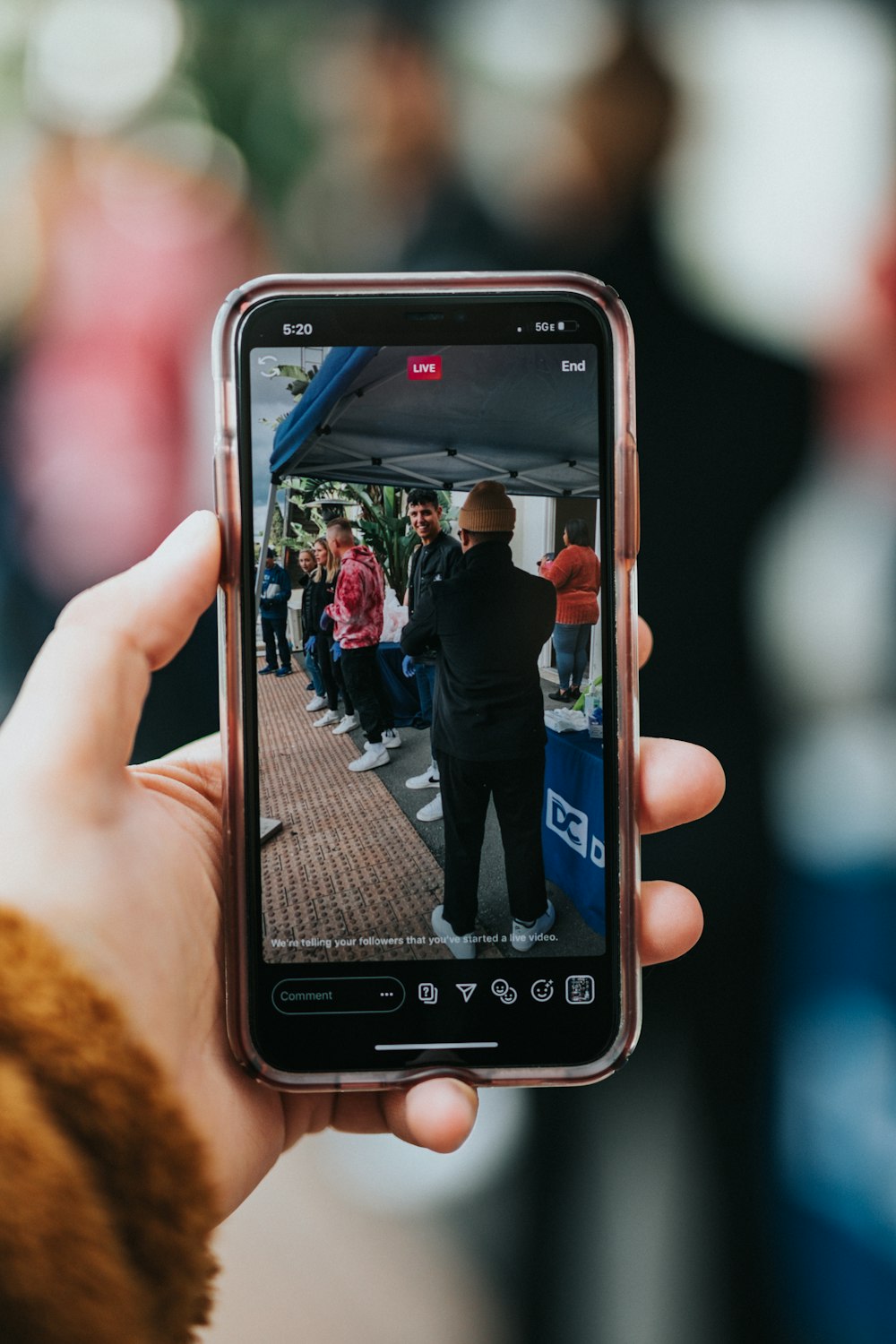WhatsApp, the globally renowned instant messaging platform, has completely transformed the dynamics of human interaction. Conceived in 2009 by former Yahoo virtuosos, Brian Acton and Jan Koum, WhatsApp quickly catapulted into the limelight due to its unwavering commitment to user privacy, reliability, and a user-friendly interface.
With an astonishing user base surpassing two billion active users worldwide, WhatsApp has permeated every facet of daily existence. This versatile platform empowers users to transmit text messages, voice messages, images, videos, and documents through an internet connection, serving as an economical substitute for traditional SMS.
What sets WhatsApp apart is its impenetrable end-to-end encryption, assuring the confidentiality of messages for both the sender and recipient. Additionally, WhatsApp boasts voice and video calling functionalities, effectively transcending geographical boundaries, enabling individuals to engage in face-to-face dialogues, irrespective of their physical locations.
Beyond personal usage, WhatsApp Business unfurls an array of tools, replete with features such as automated responses and business profiles, to facilitate corporate interactions with customers. Although WhatsApp has revolutionized the sphere of communication, it has also been under scrutiny due to concerns surrounding misinformation and privacy issues. In essence, WhatsApp has emerged as an embodiment of seamless and secure global communication, bridging temporal and spatial divides with its intuitive platform.
Now, let’s embark on a journey to unravel the art of recording WhatsApp conversations. Whether it’s a critical business discussion or a heartwarming chat with a loved one, there are instances where recording a WhatsApp call can serve as a valuable asset for future reference and reminiscence. This comprehensive guide will delve into five effective methods to record WhatsApp calls on both smartphones and personal computers, ensuring that those pivotal moments are never lost in the sands of time.
Benefits of Recording WhatsApp Calls
Recording WhatsApp calls can offer an array of advantages, both in personal and professional contexts. Let’s explore some of the key benefits:
Documentation and Reference: Perhaps the most apparent benefit is the ability to document and reference significant conversations. Whether it’s intricate work-related discussions, crucial instructions, or formal agreements, having a recorded copy of the conversation can serve as an invaluable point of reference, particularly in the realms of business, legal proceedings, or educational settings.
Preservation of Memories: Recording WhatsApp calls allows you to encapsulate precious moments and cherished memories shared during personal conversations. Be it an emotionally charged conversation with a family member or a heartfelt message from a loved one, these recorded calls transform into treasured mementos that can be revisited at your leisure.
Enhanced Communication: Call recording acts as an aid to effective communication. During conversations, especially in contexts like interviews or discussions, essential details may slip through the cracks, or specific points may be forgotten. Reviewing recorded calls ensures that you grasp every detail, facilitating comprehensive understanding and appropriate responses.
Training and Education: In educational or professional environments, recorded calls find utility in training and educational endeavors. Educators can record lessons for students’ future reference, while businesses can utilize recorded calls for employee training or quality control purposes.
Compliance and Legal Protection: Certain industries and professions necessitate call recording to comply with regulations and for legal purposes. For instance, financial institutions often record customer interactions to adhere to industry standards. Likewise, in legal matters, recorded calls can serve as vital evidence in disputes or investigations.
Time Management: Recorded calls can save time by eliminating the need to take extensive notes during a conversation. This allows you to focus on actively participating in the conversation. Subsequently, you can revisit the recording to extract pertinent information, minimizing the risk of overlooking critical points.
Accountability and Conflict Resolution: Recording WhatsApp calls can establish accountability in various scenarios. In the event of disputes or misunderstandings, you can refer to the recorded conversation to clarify facts and amicably resolve issues. This proves particularly beneficial in professional relationships and business dealings.
Language and Pronunciation Enhancement: Language learners and individuals aiming to refine their pronunciation can benefit from recording calls. By reviewing their conversations, they can pinpoint areas of improvement and work on articulation, vocabulary, and fluency.
Peace of Mind: The knowledge that you possess a record of pivotal calls can bring peace of mind. Whether it’s a business negotiation, a job interview, or a critical conversation with a customer service representative, having a recorded copy provides reassurance that essential information and agreements will not slip from memory.
Evidence Gathering: In situations involving potential misconduct, harassment, or fraud, recorded calls play a vital role in evidence collection. This evidentiary value proves invaluable in legal proceedings or when reporting issues to relevant authorities.
Understanding the Legal Aspects
Before delving into the methods of recording WhatsApp calls, it’s imperative to grasp the legal intricacies surrounding call recording. Laws governing call recording exhibit variations from one jurisdiction to another. In certain regions, recording calls without the consent of all involved parties is illegal. Therefore, it is paramount to acquaint yourself with the relevant legislation applicable in your locale before proceeding with call recording.
Recording WhatsApp Calls on Smartphones
Method 1: In-Built Screen Recording
In-built screen recording constitutes a feature available on numerous contemporary Android and iOS smartphones. This functionality enables you to seamlessly capture both the video and audio feed of your WhatsApp calls. Typically, this feature can be accessed through the device’s quick settings or control center.
Features:
- Captures both video and audio seamlessly.
- Usually accessible from the device’s quick settings or control center.
- Integrated into the smartphone’s operating system, ensuring compatibility.
Pros:
- User-friendly and readily available on most devices.
- Eliminates the need for additional app installations.
- Captures both video and audio seamlessly.
Cons:
- Availability contingent on the smartphone model and operating system version.
- May lack advanced recording options or editing features.
- Provides limited control over recording settings compared to third-party applications.
Instructions:
- Launch WhatsApp: Initiate the WhatsApp application on your smartphone.
- Make the Call: Place the WhatsApp call that you intend to record.
- Access Control Center (iOS) or Screen Recorder Shortcut (Android): On iOS devices, swipe down from the top right corner of your screen to access the Control Center. For Android devices, the screen recording shortcut can often be found in your notification panel or quick settings menu.
- Commence Recording: Activate the screen recording feature in the Control Center (iOS) or via the screen recording shortcut (Android). Ensure that the microphone audio is enabled to capture the audio from the call.
- Conclude Recording: Upon the completion of your WhatsApp call, halt the screen recording. The recorded file will be automatically saved in your device’s gallery or the designated storage location.
Method 2: Third-Party Recording Apps
![AZ Screen Recorder Review [Features & How-tos]](https://images.wondershare.com/democreator/article/az-screen-record-with-audio.jpg)
Third-party recording applications, available for download from app stores, provide an array of advanced recording features. They prove especially useful for devices lacking built-in screen recording functionality.
Features:
- Varied recording settings encompassing video quality and format.
- Often endowed with additional features such as video editing capabilities.
- May offer options for customized overlays, such as watermarking.
Pros:
- Bestow greater control over recording settings.
- Frequently support recording in various formats.
- Might provide supplementary features such as editing and sharing options.
Cons:
- Entail downloading and installation from app stores.
- Some free applications may incorporate advertisements or feature limitations.
- May necessitate granting permissions for complete functionality.
Examples: Prominent third-party recording apps include AZ Screen Recorder, DU Recorder (for Android), and Screen Recorder + (for iOS).
Instructions:
- Download a Third-Party Recording App: Navigate to your device’s respective app store (Google Play Store for Android or the App Store for iOS) and search for a reputable screen recording application. Some popular choices encompass AZ Screen Recorder, DU Recorder (for Android), or Screen Recorder + (for iOS).
- Install and Configure the App: Download and install the selected recording application. Follow the application’s on-screen instructions to complete the setup process, including granting any necessary permissions.
- Launch WhatsApp and Make the Call: Open WhatsApp and initiate the call that you wish to record.
- Activate the Recording App: Trigger the third-party recording application you installed and follow its interface to commence recording. Ensure that you enable the microphone audio recording to capture the conversation.
- Terminate Recording: When your WhatsApp call concludes, cease the recording within the third-party application. The recorded file is typically accessible from within the application.
Method 3: Google Voice (Android)
Google Voice, a communication platform presented by Google, enables users to make calls, send texts, and receive voicemails. Although not primarily designed for call recording, it harbors a feature that can be harnessed for call recording on Android devices.
Features:
- Integration with your Google account, affording easy access to recorded calls.
- Simplified recording process with the press of a key.
- Facilitates listening to voicemails and recorded calls within the application.
Pros:
- Seamlessly integrated with your Google account.
- User-friendly for call recording purposes.
- Stores recorded calls directly within the Google Voice application.
Cons:
- Specific to Android devices.
- May not offer as extensive a feature set as dedicated recording applications.
- May necessitate the setup of a Google Voice number.
Note: This method is exclusive to Android devices and requires the utilization of Google Voice.
Instructions:
- Install Google Voice: If not already installed, download and install the Google Voice application from the Google Play Store.
- Configure Google Voice: Complete the initial setup process for Google Voice, which may entail verifying your phone number and linking it to your Google account.
- During a WhatsApp Call: While engaged in a WhatsApp call, press the number “4” on your device’s keyboard. This action initiates call recording.
- Terminate Recording: To conclude the recording, press “4” once more. The recorded conversation is stored in your Google Voice account and can be accessed through the Google Voice application or website.
Recording WhatsApp Calls on PC
Method 4: WhatsApp Web

WhatsApp Web serves as a web-based platform that grants access to WhatsApp on your computer. While it does not encompass a built-in call recording feature, you can employ screen recording software to capture WhatsApp calls.
Features:
- Facilitates access to WhatsApp on a larger computer screen.
- Convenient for composing extensive messages with a physical keyboard.
- Compatible with any computer equipped with internet connectivity.
Pros:
- Enables the utilization of WhatsApp on a larger screen.
- Eases the process of crafting lengthy messages.
- Operable on any computer with internet access.
Cons:
- Demands an active WhatsApp account on a smartphone.
- Screen recording software might entail a learning curve.
- Recording quality can hinge on computer performance and network connection.
Note: To use WhatsApp Web, you must possess an active WhatsApp account on your smartphone.
Steps:
- Launch WhatsApp Web: Employ your computer’s web browser to navigate to WhatsApp Web. Scan the QR code displayed on the screen using your WhatsApp mobile application to establish a connection.
- Initiate a WhatsApp Call: Initiate a WhatsApp call with your contact while utilizing WhatsApp Web on your computer.
- Utilize Screen Recording Software: Employ screen recording software on your computer (such as OBS Studio, Bandicam, or ScreenFlow) to record the video and audio of the WhatsApp call. Ensure that you configure the software to capture both audio sources, including your computer’s sound output.
- Conclude Recording: Upon the culmination of the WhatsApp call, halt the screen recording software. The recorded file will be saved in your specified location on your computer.
Method 5: Emulators and Recording Software

Emulators are software applications that create a virtual environment on your computer, allowing you to run mobile apps, including WhatsApp, on your PC. By using screen recording software alongside emulators, you can record WhatsApp calls on your computer.
Features:
- Offers the complete WhatsApp experience on a PC.
- Emulates both Android and iOS environments.
- Screen recording software can capture both video and audio.
Pros:
- Ideal for users who prefer the convenience of a computer.
- Furnishes the entire WhatsApp experience on a PC.
- Emulators are available for both Android and iOS environments.
Cons:
- Mandates the downloading and installation of both an emulator and recording software.
- May necessitate substantial computer resources.
- Initial setup and configuration may consume time.
Examples: Prominent emulator choices encompass BlueStacks (for Android) and iPadian (for iOS). Screen recording software options include OBS Studio, Bandicam, and ScreenFlow.
Steps:
- Download and Install an Emulator: Opt for an Android or iOS emulator for your PC, such as BlueStacks (Android) or iPadian (iOS). Download and install your chosen emulator.
- Configure WhatsApp in the Emulator: Launch the emulator and configure a virtual Android or iOS device. Subsequently, download and install WhatsApp within the emulator.
- Initiate the WhatsApp Call: Initiate the WhatsApp call within the emulator, following the same procedure as on a mobile device.
- Employ Screen Recording Software: Activate screen recording software on your computer to record the WhatsApp call. Configure the recording software to capture both video and audio from the emulator.
- Conclude Recording: Upon the termination of the call, employ the Stop button within your screen recording software. The recorded file will typically be saved in your specified location on your computer.
Conclusion
Recording WhatsApp calls is a potent tool with multifaceted applications, but it must be used responsibly and within the confines of legal regulations. Always secure consent before embarking on call recording, and remain cognizant of the legal requisites in your jurisdiction.
In this extensive guide, we’ve traversed five diverse methodologies for recording WhatsApp calls, encompassing both smartphones and personal computers. Whether you opt for built-in features, third-party applications, or emulators, these methods extend flexibility and convenience to cater to your recording requisites. Choose the approach that aligns with your device and preferences, and revel in the capacity to preserve your pivotal conversations for posterity.

Steven Adams, a former bank assistant, is now the founder of a tech news website. With a passion for staying up-to-date with modern advancements, Steven delivers insightful and accessible content to keep readers informed about the evolving world of technology.
Join him on his journey to uncover the latest tech news and explore groundbreaking innovations.

